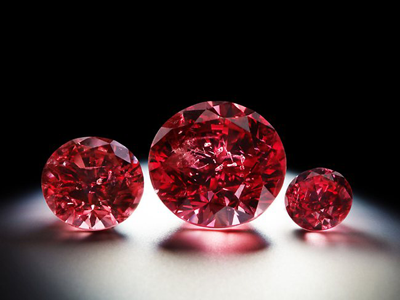
Diamonds have long been a symbol of luxury and romance, but not all diamonds are created equally. While many people admire the brilliance of diamonds, few are aware of the darker side of the industry. This leads to an important question: what are blood diamonds, and how do they compare to lab-made diamonds? Understanding these two types of diamonds is crucial for making an informed and ethical choice when purchasing jewelry.
What Are Blood Diamonds?
Blood diamonds, also known as conflict diamonds, are gems mined in war zones and sold to finance armed conflicts against governments. The term “blood diamonds” became widely recognized in the late 1990s when reports emerged about how these gems were funding brutal civil wars in African nations such as Sierra Leone, Angola, and the Democratic Republic of the Congo. The trade of blood diamonds led to human rights violations, including forced labor, child labor, and violence against miners. Understanding what are blood diamonds means acknowledging the suffering and exploitation tied to their mining and distribution.
Despite international efforts like the Kimberley Process Certification Scheme, blood diamonds still find their way into the market. The Kimberley Process aims to prevent the sale of blood diamonds by ensuring that diamonds are conflict-free. However, critics argue that loopholes in the system allow some blood diamonds to be smuggled into the mainstream market. This raises concerns about the ethical implications of purchasing diamonds without knowing their true origins.
The Ethical Concerns of Blood Diamonds
The biggest concern surrounding blood diamonds is the humanitarian crisis they fuel. Many of these diamonds are mined under harsh conditions, where workers, including children, are subjected to dangerous environments. Understanding what are blood diamonds involves recognizing that their extraction often leads to environmental destruction, as mining processes devastate ecosystems and contaminate water sources. Furthermore, the profits generated from blood diamonds frequently fund militant groups, prolonging violence and instability in affected regions.
Consumers who wish to avoid blood diamonds should seek diamonds with ethical certifications or opt for alternatives. The demand for ethically sourced gems has led to increased interest in lab-made diamonds, which offer a conflict-free and environmentally friendly option. With growing awareness of what are blood diamonds, more people are turning to sustainable choices like lab-made diamonds.
What Are Lab-Made Diamonds?
Lab-made diamonds, also known as synthetic or cultured diamonds, are created in controlled environments using advanced technological processes. These diamonds have the same chemical composition, physical properties, and brilliance as natural diamonds. The key difference is that lab-made diamonds are not mined from the earth, making them a sustainable and ethical alternative. Understanding what are lab-made diamonds helps consumers make informed decisions about purchasing jewelry.
There are two primary methods used to create lab-made diamonds: High Pressure High Temperature (HPHT) and Chemical Vapor Deposition (CVD). Both processes replicate the natural formation of diamonds but in a significantly shorter time frame. Unlike blood diamonds, lab-made diamonds do not contribute to human rights violations or environmental destruction. This makes them an attractive choice for those who value ethical and sustainable jewelry options.
The Advantages of Lab-Made Diamonds
One of the biggest advantages of lab-made diamonds is their ethical production. Unlike blood diamonds, lab-made diamonds do not finance armed conflicts or involve exploitative labor practices. This makes them a guilt-free choice for socially conscious consumers. Understanding what are lab-made diamonds highlights their role in reducing the negative impact associated with traditional diamond mining.
Another significant benefit of lab-made diamonds is their affordability. Since they are created in laboratories rather than extracted from mines, they cost significantly less than natural diamonds. This price difference allows consumers to purchase larger and higher-quality diamonds at a fraction of the cost. Additionally, lab-made diamonds are free from the ethical concerns that plague the blood diamond industry.
Lab-made diamonds are also environmentally friendly. Traditional diamond mining requires significant land disruption, deforestation, and water pollution. In contrast, lab-made diamonds have a minimal environmental footprint. Knowing what are lab-made diamonds helps consumers choose sustainable options that do not contribute to ecological harm.
The Growing Popularity of Lab-Made Diamonds
As awareness about what are blood diamonds continues to grow, more people are opting for lab-made diamonds. Jewelers and retailers have started offering lab-made diamonds as an ethical alternative, catering to the increasing demand for sustainable luxury. Major brands and designers are embracing lab-made diamonds, recognizing their value in the evolving jewelry market.
The rise of lab-made diamonds has also been fueled by technological advancements that have improved their quality and availability. These diamonds are now virtually indistinguishable from natural diamonds, making them a popular choice for engagement rings, wedding bands, and other fine jewelry. With a shift in consumer preferences, lab made diamonds are set to become a dominant force in the jewelry industry.
Making an Informed Choice
When purchasing diamonds, it is crucial to understand what are blood diamonds and how they differ from lab-made diamonds. Ethical concerns, environmental impact, and affordability are all factors to consider when making a decision. By choosing lab-made diamonds, consumers can enjoy the beauty and brilliance of diamonds without supporting unethical practices.
As the diamond industry evolves, the demand for ethical alternatives is expected to rise. Consumers now have the power to drive positive change by opting for lab-made diamonds over blood diamonds. Understanding what are blood diamonds and what are lab-made diamonds empowers buyers to make choices that align with their values. With the growing availability of lab-made diamonds, ethical and sustainable luxury is more accessible than ever before.

